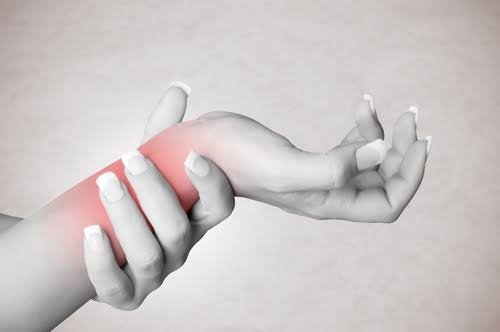What Paresthesia Is All About And Why You Experience It
What Is Paresthesia?
If you’ve ever felt as though your skin was crawling, or had numbness or itching for no apparent reason, you may have experienced paresthesia.
Almost everyone has experienced paresthesia on one occasion or the other.
One of the most common times people get that familiar feeling of pins and needles is when their arms or legs “fall asleep.”
This sensation usually occurs because you’ve inadvertently put pressure on a nerve.
It resolves once you change your position to remove the pressure from the affected nerve.
This type of paresthesia is temporary and usually resolves without treatment. If the paresthesia persists, you may have an underlying medical disorder that requires immediate treatment.
What are the symptoms of paresthesia?
Paresthesia can affect any part of the body, but it commonly affects the:
hands, arms, legs, feet.
It can be temporary or chronic. The symptoms can include feelings of:
- numbness
- weakness
- tingling
- burning
- cold
Chronic paresthesia may cause a stabbing pain. That may lead to clumsiness of the affected limb. When paresthesia occurs in your legs and feet, it can make it difficult to walk.
See your doctor if you have symptoms of paresthesia that persist or affects your way of life. It could be a sign that you have an underlying medical condition that needs treatment.
What causes paresthesia?
It’s not always possible to determine the cause of paresthesia. Temporary paresthesia is often due to pressure on a nerve or brief periods of poor circulation.
This can happen when you fall asleep on your hand or sit with your legs crossed for too long. Chronic paresthesia may be a sign of nerve damage.
Other possible causes of neuropathy include:
Trauma
Repetitive movement injuries
Autoimmune diseases, such as rheumatoid arthritis
Neurological diseases, such as Multiple Sclerosis.
Kidney diseases
Liver diseases
Stroke
Tumors in the brain or near nerves
Bone marrow or connective tissue disorders
Hypothyroidism
Deficiencies in vitamin B-1, B-6, B-12, E, or niacin
Getting too much vitamin D
Infections , such as Lyme disease, shingles, or HIV
Certain medications, such as chemotherapy drugs
Exposure to toxic substances, such as chemicals or heavy metals
Nerve damage can eventually lead to permanent numbness or paralysis.
Who is at risk for paresthesia?
Anyone can experience temporary paresthesia. Your risk of nerve damage increases with age. You also may be more prone to it if you:
Perform repetitive movements that repeatedly compress your nerves, such as typing, playing an instrument, or playing a sport such as tennis.
Drink heavily and eat a poor diet that leads to vitamin deficiencies, specifically vitamin B-12 and foliate.
Have type 1 or 2 diabetes.
Have an autoimmune condition.
Have a neurological condition, such as Multiple Sclerosis.
How is paresthesia diagnosed?
See your doctor if you have persistent paresthesia with no obvious cause.
Be prepared to give your medical history. Mention any activities you participate in that involve repetitive movement.
You should also list any over-the-counter or prescription medications that you take.
Your doctor will consider your known health conditions to help them make a diagnosis.
If you have diabetes, for example, your doctor will want to determine if you have nerve damage, or neuropathy.
Your doctor will probably perform a full physical exam. This will likely include a neurological exam as well.
Blood work and other laboratory tests, such as a spinal tap, may help them rule out certain diseases.
If your doctor suspects there’s a problem with your neck or spine, they may recommend imaging tests, such as X-rays, CT scans, or MRI scans.
Depending on the results, they may refer you to a specialist, such as a neurologist, orthopedist, or endocrinologist.
What is the treatment for paresthesia?
Treatment depends on the cause of your paresthesia. It may be possible to treat your condition by eliminating the cause in some cases.
For example, if you have a repetitive movement injury, a few lifestyle adjustments or physical therapy may solve the problem.
If your paresthesia is due to an underlying disease, getting treatment for that disease can potentially ease the symptoms of paresthesia.
Your individual circumstances will determine whether your symptoms will improve. Some types of nerve damage are irreversible.
What should people with paresthesia expect?
Temporary paresthesia usually resolves within a few minutes.
You may have a case of chronic paresthesia if those strange sensations don’t go away or they come back far too often.
It can complicate your daily life if the symptoms are severe. That’s why it’s so important to try to find the cause.
Don’t hesitate to seek a second opinion or see a specialist if necessary.
The severity of chronic paresthesia and how long it will last largely depends on the cause. In some cases, treating the underlying condition solves the problem.
Be sure to tell your doctor if your treatment isn’t working so they can adjust your treatment plan.
How can you prevent paresthesia?
Paresthesia isn’t always preventable. For instance, you probably can’t help it if you tend to fall asleep on your arms.
You can take steps to reduce the occurrence or severity of paresthesia, though.
For example, using wrist splints at night may alleviate the compression of the nerves of your hand and help resolve the symptoms of paresthesia you experience at night.
Follow these tips for preventing chronic paresthesia:
Avoid repetitive movement if possible.
Rest often if you need to perform repetitive movements.
Get up and move around as often as possible if you have to sit for long periods.
If you have diabetes or any other chronic disease, careful monitoring and disease management will help lower your chances of having paresthesia.
Please dores, HEALTH THIS MOMENT CARES.
https://www.healththismoment.com/2018/08/what-paresthesia-paja-paja-is-all-about.html?m=1
